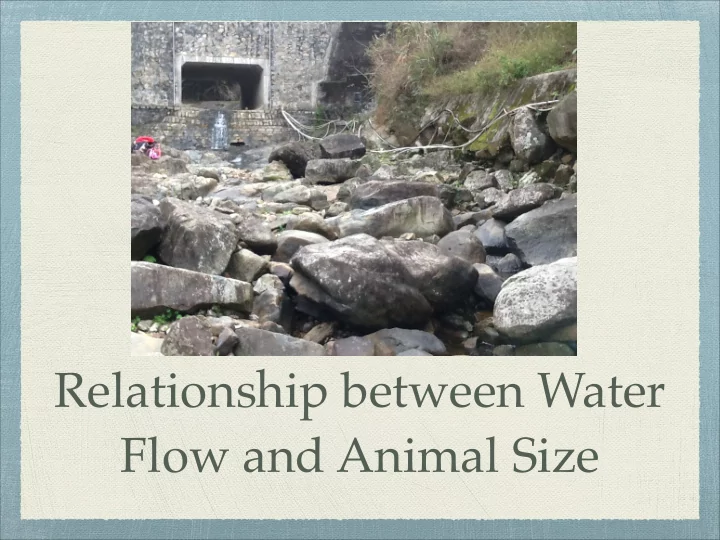

Relationship between Water Flow and Animal Size
Variables Control variables: Water depth, river bed substrate composition, light intensity, water temperature Independent variable : Water flow rate Dependent variables: Animal species(size of animals), abundance of individuals, adaptions of water flow
Hypothesis Animals with larger size can rarely adapt high water flow rate due to larger surface area to volume ratio.
Materials Water flow meter Light meter Digital thermometer Brush pen Quadrat Metal sieve Measuring tape Forceps Plastic sorting tray
Methods 1, Select four localities with different flow rate by using flow meter. 2, Set a quadrat at each localities 3, Measure the light intensity, water depth, and water temperature, make sure they are similar. 4, count the abundance of different species
Results Flow rate 0 0.02 0.1 0.12 (m/s) Water 0 0 1 3 penny Stonefly 1 0 3 1 nymph stream 11 (large) 36(large) 1 40 snail Predace- 7 0 0 0 ous chub
Analysis Most animals found in high water flow rate are smaller in size, including large stream snail, stonefly nymph and water penny. Larger animals (predaceous chub) are found in slow water flow rate quadrat.
Discussion The larger sizes of animals, the larger surface area to volume ratios. They are easily washed away at high water flow rate. They cannot withstand large water current and vice versa.
Summary The hypothesis can be supported by results. So, in slow water flow there are more animals with relatively larger size.
The end
Recommend
More recommend